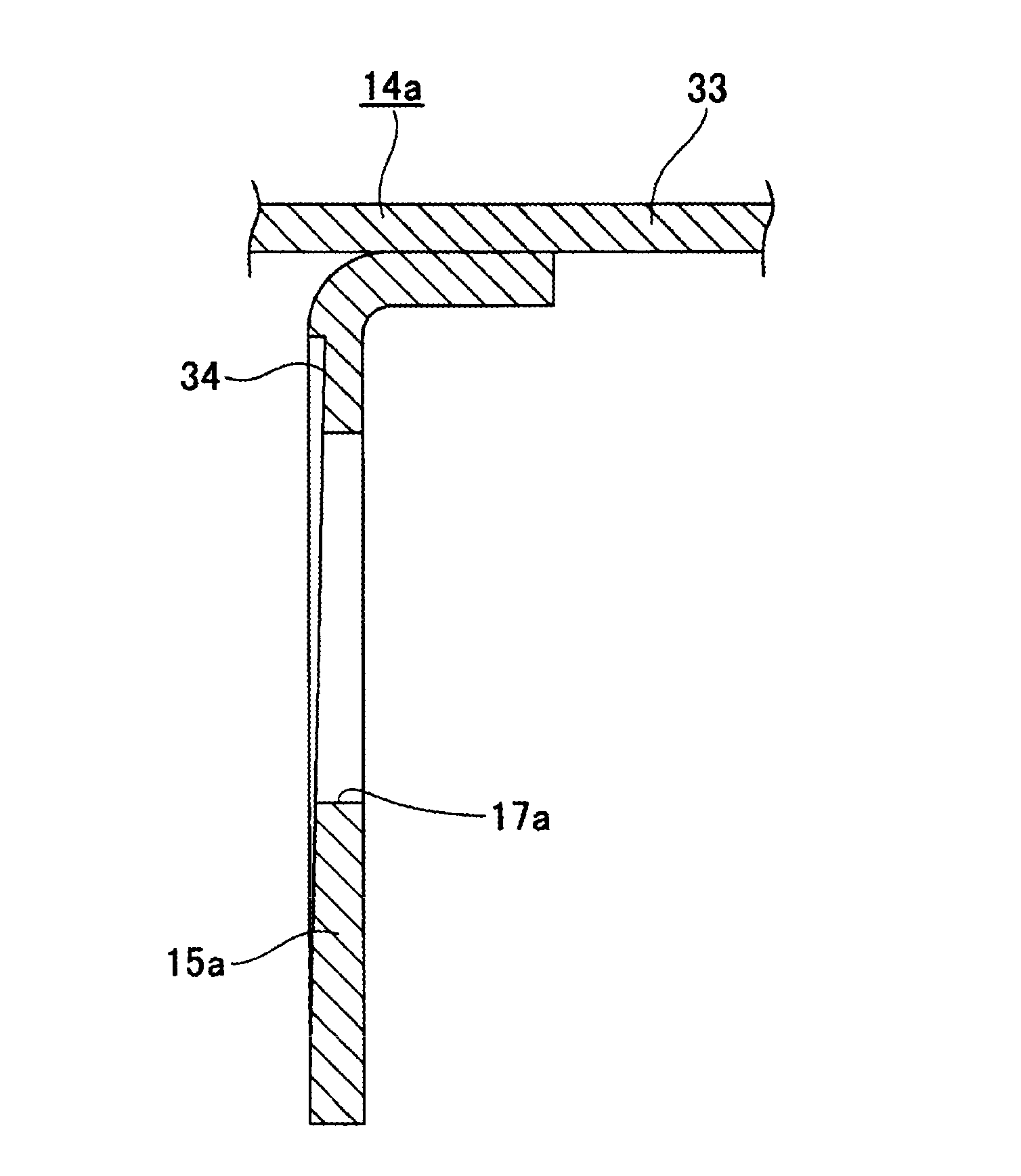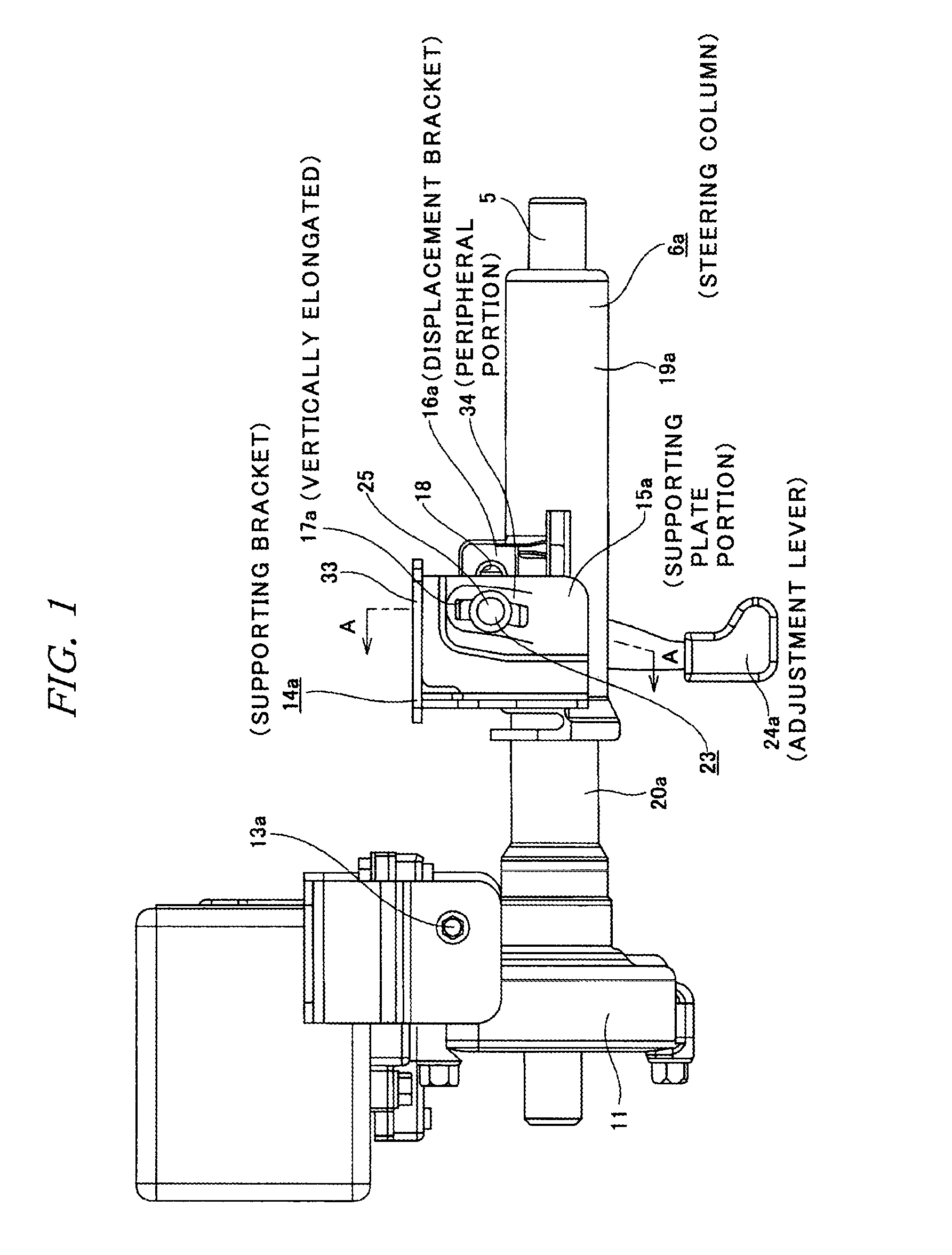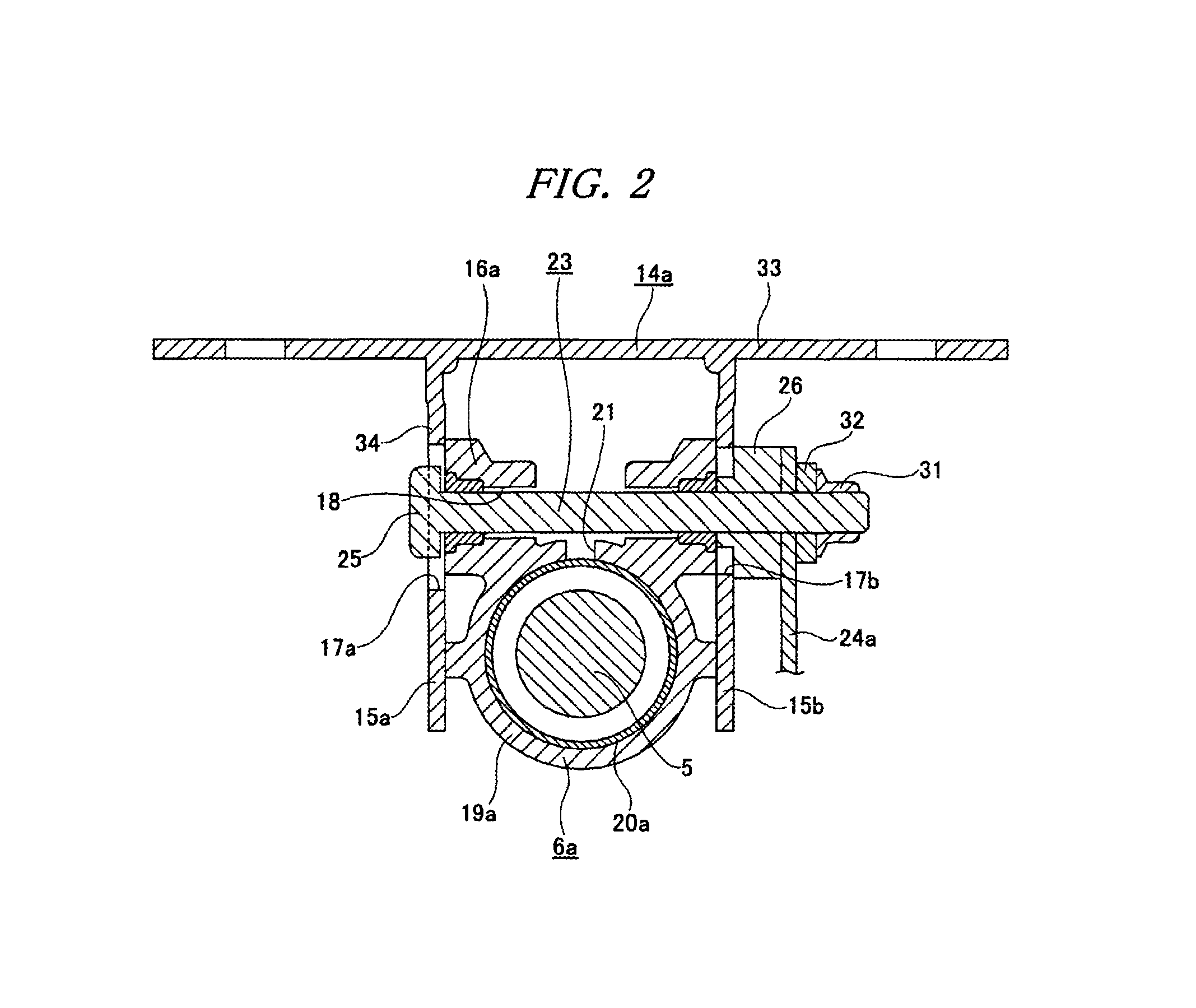Tilt steering system
a technology of tilt steering and abutment portion, which is applied in the direction of steering parts, vehicle components, transportation and packaging, etc., can solve the problems of reducing affecting the efficiency of assembly work, and unable to adopt means in many cases excluding cases where extra space is available, so as to reduce the occurrence reduce production costs, and eliminate the effect of large difference in operation for
- Summary
- Abstract
- Description
- Claims
- Application Information
AI Technical Summary
Benefits of technology
Problems solved by technology
Method used
Image
Examples
Embodiment Construction
[0056]FIGS. 1 to 4 show an embodiment of the invention. A construction of this embodiment includes a telescopic mechanism which adjusts a longitudinal position of a steering wheel 1 (refer to FIG. 1) as well as a tilt mechanism which adjust a vertical position thereof. In order to include the telescopic mechanism, a steering column 6a is used in which a rear portion of an inner column 20a is fitted in a front portion of the outer column 19a so that the overall length thereof can be extended and contracted. Additionally, a displacement bracket 16a is fixed to an upper side of the front portion of the outer column 19a, and through holes 18 which are elongated in an axial direction of the outer column 19a are formed in this displacement bracket 16a. In addition, a slit 21 along the axial direction of the outer column 19a is formed in a widthwise central portion on an upper surface of a front portion of the displacement bracket 16a, so that a bore diameter of the front portion of the ou...
PUM
 Login to View More
Login to View More Abstract
Description
Claims
Application Information
 Login to View More
Login to View More - R&D
- Intellectual Property
- Life Sciences
- Materials
- Tech Scout
- Unparalleled Data Quality
- Higher Quality Content
- 60% Fewer Hallucinations
Browse by: Latest US Patents, China's latest patents, Technical Efficacy Thesaurus, Application Domain, Technology Topic, Popular Technical Reports.
© 2025 PatSnap. All rights reserved.Legal|Privacy policy|Modern Slavery Act Transparency Statement|Sitemap|About US| Contact US: help@patsnap.com



